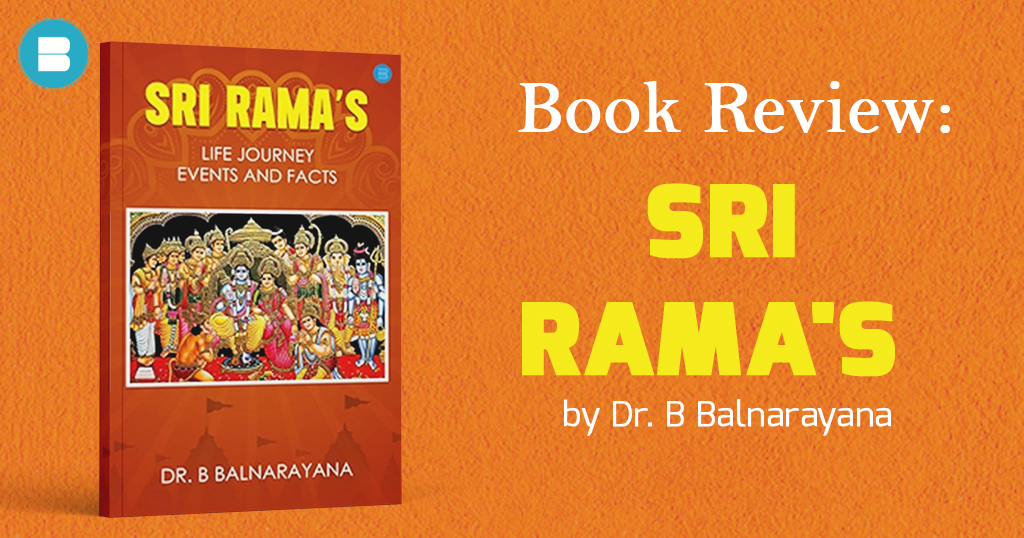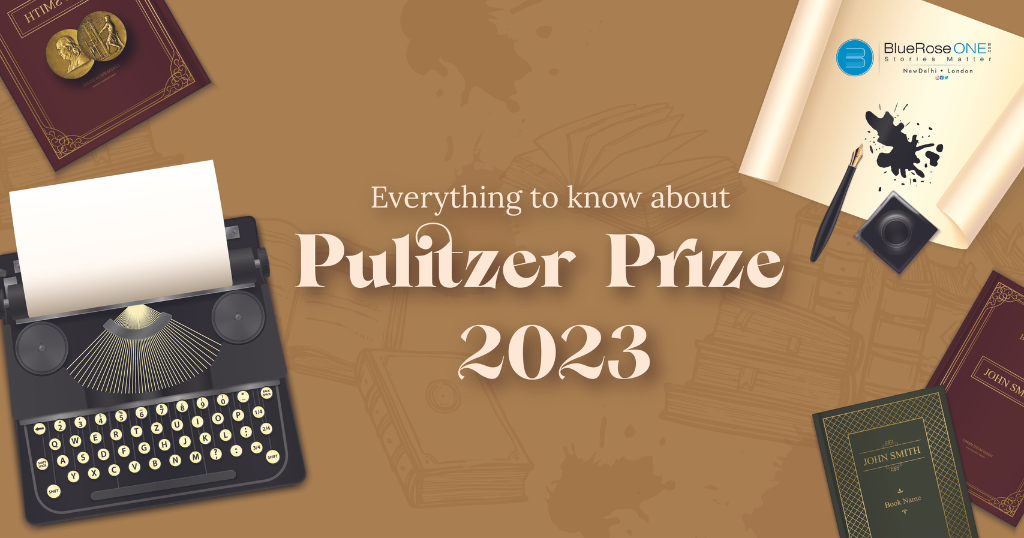
The Pulitzer Prize Awards: Honouring Excellence in Journalism and the Arts
The Pulitzer Prize award are recognised as a mark of brilliance and success in journalism, literature, and the arts. These distinguished honours, which were established in 1917, have a rich history, a noble motto, and a deep effect on the worlds of journalism, literature, and the arts. Read: Instagram Book Marketing: 7 Steps on How to Promote Your Book on Instagram In this blog, we will look at the history, motto, and impact of the Pulitzer Prizes, as well as their importance in identifying and recognising extraordinary contributions to society, as well as the winners of 2024 who shone in the world of literature. The History of the Pulitzer Prize Awards Joseph Pulitzer, a Hungarian-American writer, publisher, and philanthropist, created the Pulitzer Prizes. Joseph Pulitzer was a notable figure in American journalism in the late nineteenth and early twentieth centuries, recognised for his commitment to investigative reporting and role in developing contemporary journalism. Pulitzer was the publisher of two large newspapers, the New York World and the St. Louis Post-Dispatch, and he was a firm believer in the power of the press to shape public opinion and effect good change. He bequeathed cash in his will to establish the Columbia School of Journalism and the Pulitzer Prizes to distinguish and reward achievement in journalism and the arts. The first Pulitzer Prizes were awarded in 1917, and they initially included four journalism categories: public service, history, biography or autobiography, and the novel. Over the years, the categories have expanded to cover a wide range of fields, including fiction, non-fiction, drama, music, and poetry. Today, the Pulitzer Prize awards include 21 categories, and they continue to honour outstanding contributions in journalism and the arts. The Motto: “For the Greater Good” The Pulitzer Prize’s slogan is “For the Greater Good.” This slogan summarises the awards’ primary goal: to identify and reward work that serves the public interest and contributes to the advancement of society. It embodies Joseph Pulitzer’s view of journalism and the arts as effective tools for effecting good change and holding individuals and organisations responsible. When considering entries in each category, the Pulitzer Prize board, which selects the winners, follows this credo. The Pulitzer Prizes are ultimately about rewarding art that makes a difference in the world, whether it’s investigative journalism that exposes corruption and injustice, literature that examines the human condition, or music and theatre that touch the spirit. Influence on Journalism The Pulitzer Prize awards have had a profound influence on the field of journalism. They serve as a benchmark of excellence and inspire journalists to pursue in-depth reporting and investigative journalism. Winning a Pulitzer Prize is a career-defining achievement, and the recognition that comes with it often leads to increased funding and support for important journalistic projects. One of the most prestigious categories is the Pulitzer Prize for Public Service, which recognises exceptional reporting that has a significant impact on society. Many Pulitzer-winning investigations have exposed corruption, human rights abuses, and social injustices, prompting government action and societal change. Read: What are the Advantages & Disadvantages of Print on Demand (POD) For example, the Washington Post’s coverage of the Watergate scandal, which earned the Pulitzer Prize for Public Service in 1973, played a crucial role in holding the Nixon administration accountable and shaping modern political journalism. The Pulitzer Prizes also encourage innovation in journalism. Journalists and news organisations strive to produce work that not only meets high ethical and professional standards but also pushes the boundaries of storytelling and presentation. This commitment to excellence and innovation helps maintain the integrity and relevance of journalism in an ever-changing media landscape. Influence on Literature and the Arts In addition to their impact on journalism, the Pulitzer Prize awards have significantly influenced literature and the arts. Winning a Pulitzer Prize for Fiction or Drama can catapult an author or playwright to international recognition and bestow upon their work a timeless legacy. Pulitzer Prize-winning novels like Harper Lee’s “To Kill a Mockingbird” and Toni Morrison’s “Beloved” have become classics of American literature, exploring themes of race, identity, and societal change. These works not only resonate with readers but also contribute to the ongoing conversation about important social issues. Similarly, Pulitzer Prize-winning plays, such as August Wilson’s “Fences” and Lin-Manuel Miranda’s “Hamilton,” have had a lasting impact on theatre, addressing topics like race, family, and history in a way that engages and challenges audiences. The Pulitzer Prize for Music recognises compositions that expand the boundaries of classical and contemporary music, fostering creativity and innovation in the arts. This recognition often leads to performances by renowned orchestras and ensembles, ensuring that the work reaches a wide audience. PULITZER PRIZE 2024 WINNERS The 2023 Pulitzer Prize winners have enriched the world of literature with their exceptional contributions. These works reflect the diverse and profound stories that shape our understanding of society, history, and the human experience. As we celebrate these authors and their remarkable achievements, we are reminded of the enduring power of literature to inspire, educate, and provoke meaningful conversations about our world. Fiction: “Demon Copperhead” by Barbara Kingsolver In the realm of fiction, Barbara Kingsolver’s “Demon Copperhead” reigns supreme. This masterful reimagining of Charles Dickens’ “David Copperfield” introduces readers to the world through the eyes of an Appalachian boy. The narrator’s wise and unwavering voice takes us on a journey marked by encounters with poverty, addiction, institutional failures, and moral collapse. Against all odds, the young protagonist strives to conquer these formidable challenges. Kingsolver’s narrative prowess shines as she navigates the complex terrain of the human spirit and resilience. Fiction: “Trust” by Hernan Diaz Hernan Diaz’s “Trust” transports readers to a bygone America, offering a riveting exploration of family, wealth, and ambition. Through linked narratives rendered in diverse literary styles, Diaz weaves a tapestry of stories that examine love and power in a country where capitalism reigns supreme. This novel is a thought-provoking reflection on the complexities of the American dream and the pursuit of success. You may also like: Online Books…
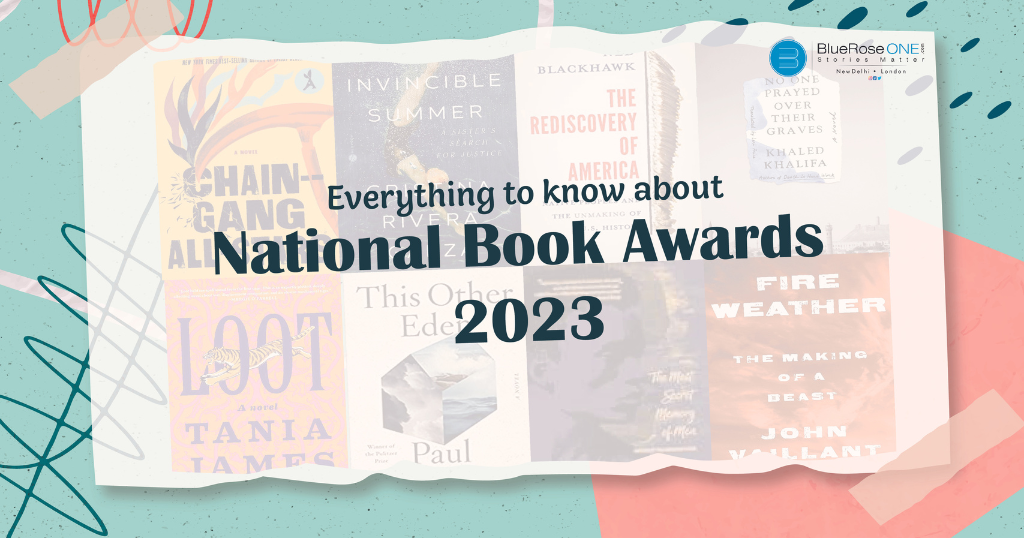
Everything to Know about National Book Awards 2024
In 2023, the National Book Awards, an annual celebration of literary excellence, have won the hearts and minds of book lovers and authors alike. The National Book Foundation hosts this distinguished event, which honours excellent works of fiction, nonfiction, poetry, translated literature, and young people’s literature. Read: What is Instagram Book Marketing: 7 Steps on How to Promote Your Book on Instagram The National Book Awards, which have a long history stretching back to 1950, have become a vital part of the literary world, commemorating remarkable authors and their contributions to writing. The Inception of an Idea The idea for the National Book Awards arose from a desire to create a literary reward that could compete with the famed Pulitzer Prizes. Melcher Linenthal, a publisher, and the American Book Publishers Council championed the proposal. Their mission was to identify and promote outstanding literary works and authors. Year of Inauguration: 1950 On March 16, 1950, the first National Book Awards were held at the Waldorf-Astoria Hotel in New York City. Six prizes were given out in the fiction, nonfiction, and poetry categories. Nelson Algren for “The Man with the Golden Arm” (fiction), Ralph L. Rusk for “The Life of Ralph Waldo Emerson” (nonfiction), and William Carlos Williams for “Paterson: Book III” (poetry) were among the winners. Evolving Categories Over the years, the National Book Awards have introduced new categories and modified existing ones to reflect the changing landscape of literature. In 1964, the awards expanded to include a children’s literature category, recognising outstanding contributions to young people’s literature. The Translated Literature category, acknowledging the importance of global voices, was introduced in 2018. A Platform for Literary Excellence The National Book Awards serve as a platform to celebrate literary excellence across various genres. Every year, the awards showcase a diverse range of voices, perspectives, and narratives, reflecting the ever-evolving landscape of literature. It provides recognition not only to established authors but also to emerging talents, ensuring that the literary world continues to thrive with fresh ideas and perspectives. The Categories: A Literary Tapestry The National Book Awards encompass five distinct categories, each representing a unique facet of literary creativity: The Impact of National Book Awards in the Past The National Book Awards have a profound impact on both authors and readers. For authors, winning or even being nominated for this esteemed award can be a career-defining moment. It not only recognises their dedication and talent but also introduces their work to a broader audience, opening doors to new opportunities. Read: Easy Hacks to Inspire Yourself to Write a Book and Get it Published Easily Readers, on the other hand, benefit from the National Book Awards by gaining access to a curated list of exceptional books. The accolade serves as a quality assurance marker, guiding readers to thought-provoking and well-crafted literature. It encourages them to explore genres and authors they might not have otherwise discovered, enriching their reading experience. Diversity and Inclusivity One of the most significant aspects of the National Book Awards is its commitment to diversity and inclusivity. The awards actively seek out and celebrate voices from marginalised communities, ensuring that a wide range of perspectives are represented in the world of literature. This commitment reflects the evolving and inclusive nature of contemporary literature, fostering a more inclusive literary canon. The Impact of Technology In today’s digital age, the National Book Awards have embraced technology to reach a global audience. Livestreamed events, social media campaigns, and digital resources make it possible for people worldwide to engage with the awards ceremony and discover the recognised works. This democratisation of access to literary celebrations ensures that the influence of the National Book Awards extends far beyond the venue. Past Winners and Their Impact The list of past National Book Award winners reads like a who’s who of literary greats. Authors such as Toni Morrison, Ta-Nehisi Coates, Jesmyn Ward, and Colson Whitehead have all been honored by these awards. Their works have not only garnered critical acclaim but have also contributed to essential dialogues about race, identity, history, and social justice. The 2023 National Book Awards As we eagerly await the announcement of the winners of the 2023 National Book Awards, it’s essential to recognise that each year, the awards reflect the spirit and concerns of their time. As of now, the nomination announcement will be held on October 3rd, 2023 and the final awarding ceremony will be held on November 15th, 2023. The winning books will undoubtedly offer insight into the prevailing themes, challenges, and aspirations of our society. They will become a part of the literary canon, contributing to ongoing conversations and shaping the future of literature. Read: What is Symbolism? Definition, Examples and Types of Symbolism as a literary device The National Book Awards are proof of literature’s lasting influence. They honor the capacity of the written word to inspire, challenge, and unite individuals from all walks of life. The National Book Awards provide an opportunity to immerse yourself in the world of modern literature, whether you’re an enthusiastic reader, an aspiring author, or simply someone who loves the beauty of a well-crafted tale. So let us congratulate the winners, congratulate the nominations, and continue to encourage the written word in all its manifestations.
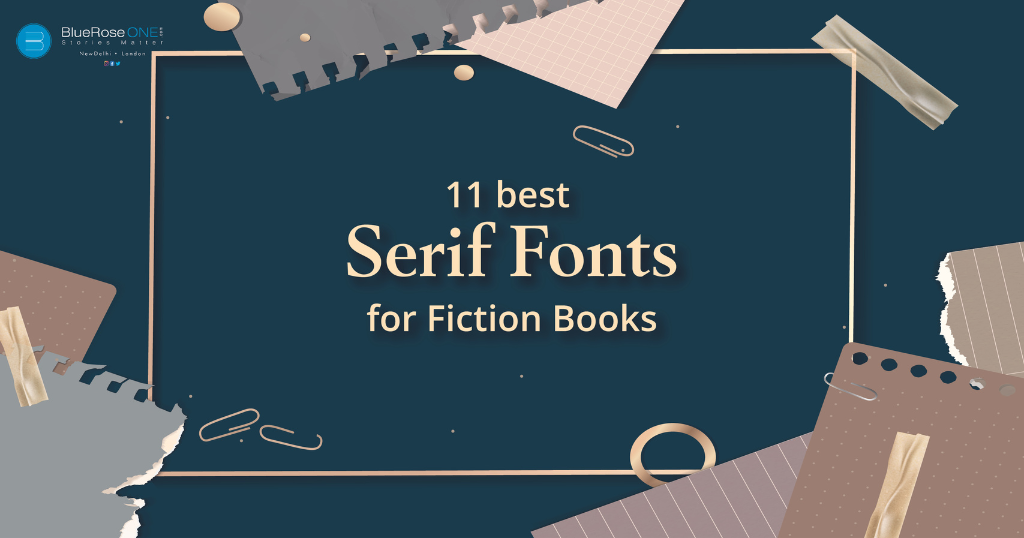
The 11 Best Serif Fonts for Fiction Books
Selecting the right font for your fiction book is a crucial aspect of book design. Serif fonts, with their timeless and classic appeal, are a popular choice for book interiors. They offer readability and elegance, enhancing the reading experience for your audience. In this blog, we’ll explore the 11 best serif fonts for fiction books, each with its unique characteristics and suitability for different genres and moods. You may also like: Literary fiction vs Genre Fiction: Definition & Examples What is a font? Before we get into the specifics of font selection, let’s clear up some terms. Experts in the field of typography distinguish between ‘typefaces’ and ‘fonts.’ Typefaces are diverse writing designs such as Times New Roman and Arial, whereas ‘fonts’ are variants in size, weight, and style within those typefaces, such as 12 pt Times New Roman bold or 14 pt Arial italic. However, for the purpose of clarity, we’ll use the term ‘font’ to refer to both the main type styles and their variants in this discussion. You may also like: List of 10 Best Proofreading Softwares to Level Up Your Writing How Do You Make the Right Font Choice for a Book? Choosing the best font for a book’s body text is sometimes a matter of personal opinion. While there are a few generally despised typefaces, most readable fonts may be regarded. Nonetheless, there are several critical aspects that any conscientious book designer should keep in mind. You may also read: What is Situational Irony? Definition, Examples and Tips for Writers In the end, choosing the correct serif font for your fiction book is critical for communicating the intended atmosphere and improving readability. When selecting a typeface, keep your target audience and novel’s genre in mind. Remember that the greatest typeface is one that is inconspicuous, allowing readers to completely immerse themselves in your tale. Whether you choose a traditional font like Times New Roman or a more beautiful one like Garamond, your font choice is critical in making your fiction book a pleasurable read.
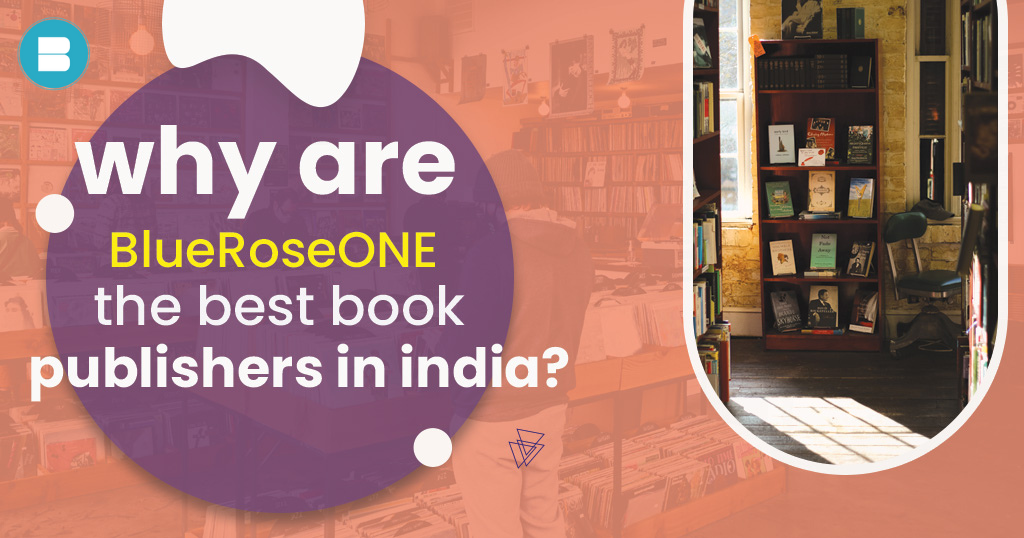
Why BlueRoseONE the Best Book Publishers in India?
BlueRoseONE, an Indian book publishing firm and is one of the best book publishers in india, has been making waves in the literary world. They have been instrumental in making innumerable authors’ aspirations of becoming published writers a reality. Do you want to publish your literary masterpiece as an aspiring self published author in India? Perhaps you’ve already written your magnum opus and are looking for the top book publishers in the country to help you bring it to life. In either case, your search has taken you to the correct location. Read: Easy Hacks to Inspire Yourself to Write a Book and Get it Published Easily. Whether you are a new author looking for your first publishing opportunity or an experienced author looking for a new platform, BlueRoseONE should be your first stop for all things book publishing. In this detailed guide, we will go deep into the world of BlueRoseONE and investigate the aspects that set them apart as the greatest book publishers in India. Who is BlueRoseONE? (Best Book Publishers) Before we dive into the reasons that make BlueRoseONE the best book publishers in India, let’s get to know them a bit better. BlueRoseONE is a renowned book publishing company that operates in India. They offer a wide range of publishing services, catering to authors from diverse genres and backgrounds. Whether you’re an emerging writer with your first manuscript or an experienced author seeking a new publishing partner, BlueRoseONE has something to offer. The Key to Successful Book Publishing What sets BlueRoseONE apart from the rest of the publishing industry in India? The answer lies in their commitment to nurturing talent, promoting creativity, and ensuring the highest quality in book production. Here are some of the key factors that make BlueRoseONE the best book publishers in India: A Platform for All Genres Quality and Professionalism Affordable Publishing Packages Expert Guidance Wide Distribution Network Print on Demand Marketing and Promotion Self-Publishing Made Easy A Platform for All GenresBlueRoseONE believes in the power of diverse voices. They are open to publishing books in various genres, including fiction, non-fiction, romance, science fiction, fantasy, self-help, poetry, and more. This inclusivity means that authors of all backgrounds and writing styles have a chance to see their work in print. Quality and ProfessionalismWhen it comes to publishing your book, quality matters. BlueRoseONE is known for its commitment to professionalism and excellence in every step of the publishing process. From editing and proofreading to cover design and formatting, they ensure that your book is polished and ready to shine. Affordable Publishing PackagesMany aspiring authors worry about the cost of publishing their books. BlueRoseONE offers a range of affordable publishing packages to suit different budgets. This means that you don’t have to break the bank to see your work in print. Expert GuidancePublishing can be a daunting process, especially for first-time authors. BlueRoseONE provides expert guidance and support throughout the journey. They offer assistance with manuscript evaluation, editing, and marketing, ensuring that you have a strong support system every step of the way. Wide Distribution NetworkGetting your book into the hands of readers is crucial for success. BlueRoseONE has a robust distribution network that ensures your book reaches bookstores, online retailers, and libraries across India. This broad reach increases your book’s visibility and potential readership. Print on DemandIn the digital age, print on demand (POD) has become a game-changer for authors. BlueRoseONE offers POD services, which means your book is printed only when it’s ordered. This eliminates the need for large print runs and reduces waste, making it a sustainable and cost-effective choice for authors. Marketing and PromotionWriting the book is just the beginning. BlueRoseONE understands the importance of effective book marketing. They offer marketing and promotional services to help your book gain the attention it deserves. From social media campaigns to book launch events, they have you covered. Self-Publishing Made EasyIf you’re interested in self-publishing, BlueRoseONE provides user-friendly self-publishing platforms. This empowers authors to take control of their publishing journey while still benefiting from professional support. If you’re looking to publish a book in India, BlueRoseONE is your trusted partner on the journey to becoming a published author. With their commitment to quality, affordability, and author support, they have earned their reputation as the best book publishers in India. Whether you’re a novelist, non-fiction author, poet, or short story writer, BlueRoseONE is your gateway to the world of publishing. Don’t wait—start your publishing journey with BlueRoseONE today and see your literary dreams come to life. FAQs about Book Publishing: Now that we’ve explored what makes BlueRoseONE the best book publishers in India, let’s address some common questions authors may have about the publishing process: How much does it cost to publish a book? The cost of publishing a book can vary significantly depending on several factors. Traditional publishing typically doesn’t require upfront costs from authors, as the publisher covers expenses like editing, cover design, and distribution. However, it’s highly competitive, and authors may receive lower royalties. Self-publishing, on the other hand, provides authors with more control but requires some financial investment. The costs can include editing, cover design, formatting, ISBN acquisition, and marketing. The price range is wide, from a few hundred to a few thousand dollars. BlueRoseONE, a notable book publisher in India, offers tailored publishing packages to accommodate different budgets, making self-publishing more accessible. How can I submit my book to a publisher? To submit your book to a publisher like BlueRoseONE, you’ll need to follow their submission guidelines. Typically, this involves preparing a polished manuscript, a book proposal (for non-fiction), and a well-crafted query letter. The query letter should succinctly introduce your book and highlight its marketability. Ensure that your submission aligns with the publisher’s genre preferences and submission criteria. Is it profitable to publish a book? The profitability of a book depends on various factors. Successful book profitability hinges on factors such as sales volume, marketing efforts, royalties, and the expenses associated with publishing and marketing. While some authors achieve substantial profits, many writers may earn modest…
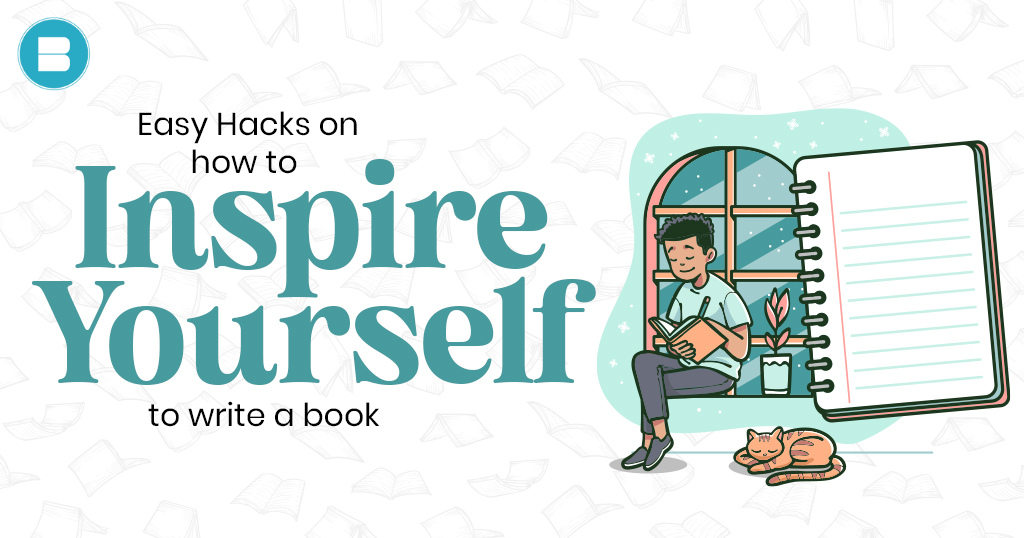
Easy Hacks to Inspire Yourself to Write a Book and Get it Published Easily
Writing a book is like embarking on an epic journey. It’s an endeavour that demands dedication, creativity, and unwavering motivation. Yet, even the most passionate writers encounter moments when their inspiration wanes and the blank page seems more daunting than ever. If you find yourself in such a predicament, fear not! Read: Everything to know about Memoir: Definition, Examples & Types In this blog, we’ll explore easy hacks to reignite your inspiration and propel you towards writing that book you’ve always dreamed of. Read: Publish Mystery Romance Novels: A Complete Fiction Genre Guide To recap, publishing a book is a great accomplishment that requires dedication and imagination. While uncertainty and writer’s block are prevalent, these simple tricks can help spark your creativity and bring you closer to your writing objectives. Remember that every writer’s path is unique, and what works best for you may differ from what works best for others. Continue to be enthusiastic, driven, and to write; the world is waiting for your narrative.
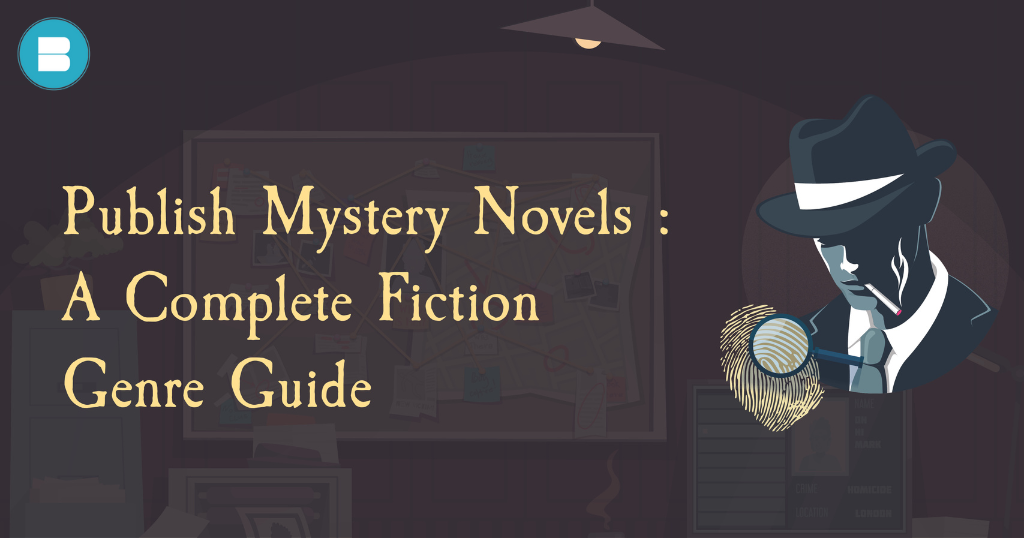
How to Publish Mystery Novels: A Complete Fiction Genre Guide
Mystery books have a timeless fascination that draws readers of all ages in. Mystery fiction is a popular genre because of the thrill of solving a hard puzzle, the excitement of discovering hidden secrets, and the tension of a well-crafted storyline. Looking to publish mystery novels? Learn how to publish a book in cost effective manner. This article will walk you through the process of publishing mystery books if you’re an aspiring mystery writer or an author wishing to get into the field of detective fiction. We’ve got you covered on everything from comprehending the subtleties of the genre to advice for successful publication. Exploring the Mystery Genre Before delving into the intricacies of publishing, it’s crucial to understand the mystery genre’s various facets. Mystery novels encompass a wide range of subgenres, each with its unique elements. Here are some popular subgenres you might encounter: Detective Stories: Classic detective stories feature a brilliant sleuth who unravels a complex case. Think of Arthur Conan Doyle’s Sherlock Holmes or Agatha Christie’s Hercule Poirot. Mystery Crime Books: These novels focus on solving crimes, often involving murder, theft, or conspiracy. Authors like Raymond Chandler and Dashiell Hammett are celebrated for their contributions to this subgenre. Supernatural Fiction: Combining elements of mystery and the supernatural, these books introduce paranormal phenomena, ghosts, or otherworldly forces into the plot. Stephen King’s works often blend mystery with the supernatural. Fantasy Fiction Books: Fantasy mysteries transport readers to other realms, where magical and mythical elements are integral to solving the central mystery. Neil Gaiman’s “Neverwhere” is an example of this subgenre. Paranormal Books: Paranormal mysteries revolve around unexplained phenomena or supernatural abilities. Authors like Charlaine Harris have popularized paranormal mysteries. Understanding Your Audience Identifying your target audience is a crucial first step in publishing a mystery novel. Mystery readers are diverse, ranging from avid fans of cozy mysteries (typically featuring amateur detectives in quaint settings) to those who prefer gritty, hard-boiled crime novels. Consider the following when defining your readership: Genre Preferences: It’s critical to identify the mystery subgenre to which your novel belongs, such as cosy mysteries, police procedurals, or psychological thrillers. Different readers have different interests within the mystery genre, so identifying your subgenre allows you to properly focus your marketing efforts and connect with the correct audience. Demographics: Identifying your target readers’ demographics, such as age groups and gender, allows you to adapt your marketing techniques. Mysteries have the ability to capture a wide spectrum of readers, from young adults to elders, and knowing your target demographic helps you develop messaging and advertising strategies that will resonate with them. Tone and Style: The tone and style of your mystery novel play a pivotal role in attracting the right readers. Whether your book has a light, humorous tone or a darker, suspenseful atmosphere, it’s essential to convey this aspect clearly in your marketing materials. This ensures that readers who appreciate your chosen tone and style are drawn to your book. Crafting a Compelling Mystery A well-constructed mystery is the heart of any successful novel in this genre. Here are some key elements to keep in mind: Engaging Protagonist: Create a relatable and compelling protagonist—whether it’s a seasoned detective, an amateur sleuth, or a supernatural entity. Intriguing Plot: Craft a plot with unexpected twists and turns that keep readers guessing until the very end. Red herrings and misdirection can add depth to your story. Well-Defined Characters: Develop memorable supporting characters, each with their motives, secrets, and quirks. The interplay of personalities can enhance the mystery. Setting: Choose a setting that complements your story. Whether it’s a cozy village, a bustling city, or a mystical realm, the setting should contribute to the atmosphere and plot. Clues and Foreshadowing: Leave breadcrumbs for readers to follow, dropping subtle hints and clues that lead to the ultimate revelation. The Writing Process Once you have a firm grasp of your genre and audience, it’s time to write your mystery novel. Here are some writing tips to help you on your journey: Outline: Start with a detailed outline that includes key plot points, character backgrounds, and the central mystery’s resolution. This roadmap will keep your story on track. Pace Yourself: Balance suspenseful moments with quieter, character-driven scenes. Effective pacing is essential to maintain reader engagement. Edit and Revise: After completing your initial draft, edit rigorously. Check for inconsistencies, plot holes, and pacing issues. Beta readers can provide valuable feedback. Build Tension: Gradually increase tension as the story unfolds. Raise the stakes for your characters, making the mystery’s resolution all the more satisfying. Navigating the Publishing Process With your mystery novel in hand, it’s time to explore publishing options. Here are three primary routes: Traditional Publishing: Submit your manuscript to literary agents and publishing houses specializing in mystery fiction. This route offers access to professional editing, marketing, and distribution resources. Self-Publishing: Self-publishing platforms like Amazon Kindle Direct Publishing (KDP) and IngramSpark allow authors to publish their books independently. You have control over all aspects of your book, from cover design to pricing. Hybrid Publishing: Some authors opt for hybrid publishing, which combines elements of traditional and self-publishing. Hybrid publishers offer various packages, allowing authors to select the services they need. Once you choose your publishing route, you’ll follow these steps: ISBN and Copyright Secure an ISBN (International Standard Book Number) for your book, as it plays a crucial role in facilitating distribution and monitoring sales. Additionally, contemplate the option of copyright registration to enhance the protection of your work. These steps are pivotal in ensuring your mystery novel’s legal and logistical readiness for publication. Book Cover Design A mystery book’s cover design is critical for attracting readers’ interest and expressing the heart of the novel. It usually includes characteristics that allude to the mystery genre, such as dark and atmospheric images, fascinating symbols, or hints. To generate suspense, the colour palette frequently incorporates deep blues, blacks, or reds. Furthermore, the cover may feature crucial characters or locales, giving readers a look inside the story. A successful mystery book cover not only attracts readers in, but also promises a fascinating and enigmatic tale within its pages, piqueing their attention. Typographical Setting A mystery book’s formatting…
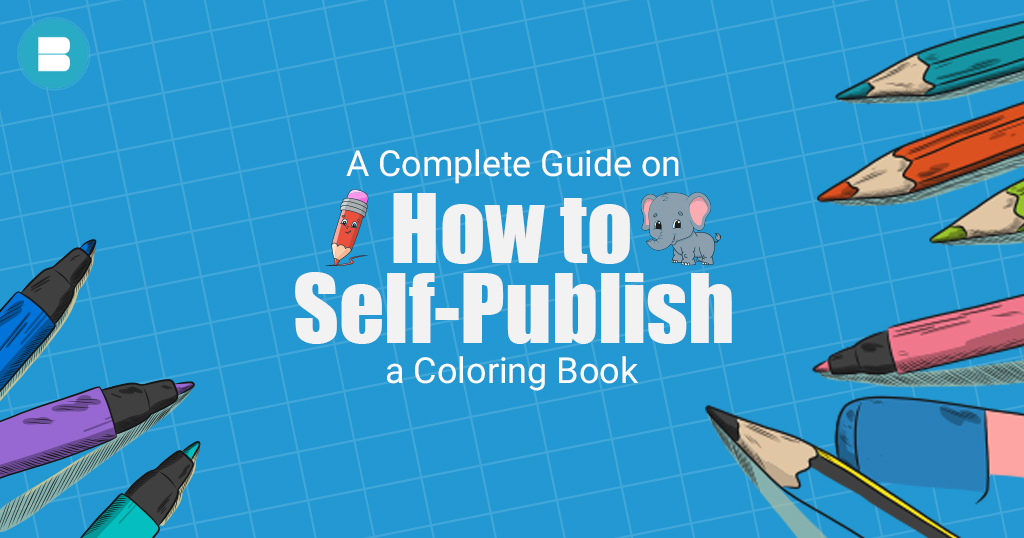
A Complete Guide on How to Self-Publish a Coloring Book.
Self-publishing a coloring book may be a rewarding and financially successful endeavour if you have a strong passion for art and want to share your creative abilities. Coloring books have been more popular among people of all ages, establishing themselves as a viable market segment. We will walk you through the process of self-publishing your own coloring book in this comprehensive tutorial. You may also like: 5 Act Structure: Definition, Examples and More Understanding the Coloring Book Phenomenon Before going into the complexities of self-publishing, it’s critical to understand the tremendous popularity and potential of coloring books. Coloring is more than just a fun pastime; it also has a number of therapeutic benefits. Many people have taken to coloring in recent years to unwind, relieve stress, and express their creativity. As a result, the market for adult coloring books has seen a significant increase in demand. Coloring crosses all age groups, providing a universal avenue for relaxation and self-expression. Aside from its nostalgic appeal, psychologists and therapists have recognised it as a helpful technique for mindfulness and stress reduction. Coloring helps people temporarily detach from the digital world by immersing themselves in a tactile and relaxing experience. Read: What is Indie Publishing? And How to Publish your Book in 2023. Adult coloring books, with their elaborate artwork and varied subjects, appeal to a wide range of interests. These books, whether they include mandalas, natural images, or pop culture references, serve as a blank canvas for customization and artistic discovery. As we explore the world of self-publishing coloring books, it’s important to remember the significant influence these creative outlets have on those looking for refuge, relaxation, and a way to connect with their inner artist. This comprehension not only feeds our ambition, but it also emphasises the possibility and significance of entering this booming sector. Choosing Your Coloring Book Theme Picking your theme This first step is the foundation of your entire creative endeavour. To make an informed decision, analyse your target audience and the precise niche you want to capture. Are you designing a colouring book for youngsters, adults, or a specific group with specific preferences? This question serves as the foundation for your topic choices. Children like bright and fascinating themes that are frequently centred on familiar characters, animals, or fanciful experiences. The idea is to pique their interest and inventiveness while also providing pleasurable colouring experiences. When it comes to adult colouring books, the options are far broader. The themes might range from elaborate mandalas to abstract designs that appeal to individuals looking for a creative challenge. Nature-inspired motifs, patterns, and even pop culture allusions such as Pokémon have all found a home in the realm of adult colouring books. The topic you choose sets the tone for the entire colouring book creation. It determines not just the substance but also the style, intricacy, and general attractiveness of your product. So, spend your time thinking about the topic that would most appeal to your target audience, since this is the first stage in creating a colouring book that will grab hearts and imaginations. You may also like: What is Plot Structure? Definition with Examples Creating Your Coloring Book The next exciting stage in self-publishing your colouring book is the actual creation of its pages, using a well-chosen topic as your guide. Your stage allows your artistic abilities to show, and there are two main ways to begin your creative adventure. Hand-drawn drawings are used in the first approach. Here, you may precisely construct each page using a pen, pencil, or brush. This tactile method gives your colouring book a personal touch, making it one-of-a-kind and real. It’s a popular option among individuals who like traditional illustrated artistry. Alternatively, you may use digital tools to create your own colouring book pages. This approach is versatile, allowing you to play with a wide range of styles, colours, and effects. Regardless of the approach you choose, ensuring that your designs are high-resolution is crucial. This is critical for print quality and digital dissemination. High-quality images provide clear, clean lines and brilliant colours, which improve the overall appearance of your colouring book. Furthermore, keep your target audience in mind while balancing detailed elements with user-friendly designs. Children may prefer simpler, more approachable pictures, but adults frequently desire the challenge and gratification that elaborate patterns provide. In short, the creative phase is when your idea comes to life and your chosen approach—whether hand-drawn or digital—must be consistent with your subject and appealing to your target audience. These pages will serve as a blank canvas for limitless ideas, making the creative process enjoyable. Legal Considerations and Copyright If you plan to include recognizable characters or images in your colouring book (e.g., Pokémon colouring pages), it’s crucial to understand copyright laws and obtain the necessary permissions or licenses. Failing to do so can lead to legal issues. Formatting Your Coloring Book When formatting your colouring book, consider the size, orientation, and page layout. Standard sizes like 8.5 x 11 inches or 8 x 10 inches are commonly used. Ensure that your pages are one-sided to prevent colour bleeding through to the next page. You can also include a title page and a brief introduction or dedication. You may also like: How to Publish a Book? | Publish Your Book | BlueRoseOne Choosing Your Publishing Platform Now, let’s explore how to publish your colouring book. There are various publishing platforms to choose from, both for physical and digital distribution. Amazon Kindle Direct Publishing (KDP): KDP offers an excellent platform for self-publishing both physical and e-books. You can easily create and upload your colouring book, set the price, and make it available to a global audience. KDP also provides print-on-demand services, eliminating the need for upfront printing costs. IngramSpark: IngramSpark is a popular choice for self-publishing physical books. It allows you to distribute your colouring book to bookstores, libraries, and online retailers worldwide. Keep in mind that you’ll need to handle the printing and shipping logistics. BlueRose Publishers: BlueRose Publishers is…
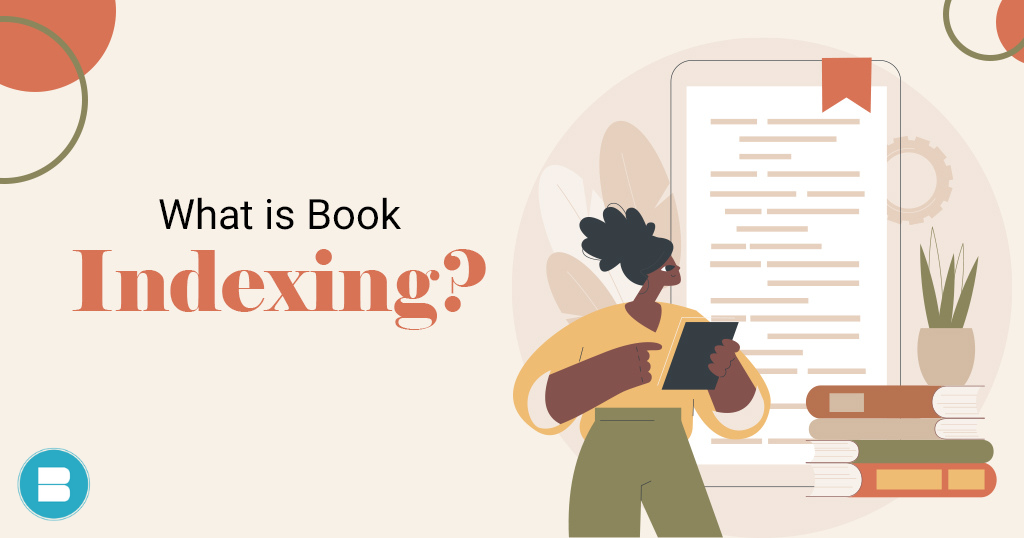
What is Book Indexing? Best Ways to Create Book Index.
When you pick up a book, whether it’s a dense academic tome or a page-turning fiction, you may not give much thought to the index. However, book indexing is critical in assisting readers in finding particular information inside the pages of a book. Read: List of 5 Best Suitable Fonts to Beautify Your Book. This blog article will explain what book indexing is, where you can find it, how it differs from other book features such as a glossary or table of contents, and why it is important. Let’s get started! What is book indexing? The act of compiling an alphabetical list of terminology, concepts, names, and themes mentioned in a book, together with associated page numbers, is known as book indexing. This list, known as an index, is a useful tool for readers who want to access specific information or references inside the book quickly. An index, in essence, serves as a guide to the book’s content, making it easier for readers to explore and discover what they need. Where is the index found in a book? The book index is typically located at the back of a book, right before or after any appendices or supplementary materials. It consists of an organised list of keywords or phrases, followed by the page numbers where those terms can be found within the book’s main text. You may also read: 10 Best Books on Writing Every Author Should Read What is the difference between an index and a glossary? While both an index and a glossary provide reference points for readers, they serve different purposes: Index: An index is a comprehensive list of specific terms and topics mentioned throughout the book, along with page references. It helps readers find the information they’re looking for within the context of the book’s content. Glossary: A glossary, on the other hand, is a list of specialised or unfamiliar terms used in the book, along with their definitions. It provides readers with explanations for terminology that might not be commonly understood. You may also like: How to Become a Writer: A Step-by-Step Guide for Authors You may also like: 100+ Adjectives That Start With N (With Examples & Definitions) What is the purpose of indexing? The primary purpose of book indexing is to enhance the usability and accessibility of a book. Here’s why indexing is essential: Facilitating Quick Reference:Indexing is a crucial tool for readers, as it expedites the process of finding precise information within a book. By organising topics, terms, and references alphabetically with page numbers, an index acts as a roadmap. This feature saves readers valuable time and effort, making it easy to pinpoint the information they need, especially in large or complex books. Whether for casual reading or targeted research, quick reference via indexing significantly enhances the overall user experience. Enhancing Research and Study:Book indexes are invaluable assets for researchers, students, and professionals. They serve as treasure troves of knowledge, allowing users to locate pertinent information for their projects, papers, or studies. Researchers can efficiently navigate vast volumes of content, while students can bolster their academic work by referencing specific details, all thanks to the meticulous organization provided by indexes. These tools transform books into valuable research companions. Improving Comprehension:Book indexing goes beyond mere convenience; it deepens comprehension. Readers can connect the dots between related topics and concepts by using an index to cross-reference entries. This aids in gaining a holistic understanding of the book’s content. By effortlessly accessing interconnected information, readers can grasp the context and nuances of the subject matter, making their reading experience more enlightening and enjoyable. In essence, indexing enhances the cognitive aspects of reading. You may also read: Literary fiction vs Genre Fiction: Definition & Examples What is the difference between an index and its contents? The table of contents (TOC) and the index serve different purposes: Table of Contents (TOC): The table of contents provides an overview of the book’s structure, listing its chapters, sections, and their starting page numbers. It serves as a guide to the book’s organisation and is usually located at the beginning. Index: As mentioned earlier, the index is an alphabetical list of terms and topics with page references, helping readers find specific informationke within the book. You may also like: How Book Editing Can Turn Your Story into a Bestseller? What is an index in a book? Let’s take a practical example to illustrate the concept of an index in a book: Imagine you’re reading a history book about World War II. In the index, you might find entries like: “D-Day, 78-85” “Eisenhower, Dwight D., 62-65” “Holocaust, 120-135” “Pearl Harbor, 42-47” These entries indicate that if you want to read about the D-Day invasion, you can turn to pages 78 to 85 for detailed information. Similarly, you can find information about Dwight D. Eisenhower on pages 62 to 65. You may also read: List of Top 10 Famous Ravinder Singh Books of All Time What is the purpose of an index in a book? The primary purpose of an index in a book is to provide readers with a valuable tool for efficient information retrieval. It enables readers to: Locate specific information quickly. Cross-reference related topics and concepts. Use the book as a resource for research and study. Enhance comprehension and understanding of the book’s content. In the end, book indexing is a sometimes ignored yet critical part of book design and printing. It acts as a link between readers and the information they are looking for inside the pages of a book. So, the next time you use an index to discover that important piece of information in a book, remember how important it is to making your reading experience more efficient and pleasurable. Frequently asked questions on Book Indexing Which comes first, glossary or index? In most books, the glossary typically comes before the index. This placement allows readers to familiarise themselves with key terms before using the index to search for specific information. However, the exact order may vary depending on the book’s layout and design. Where…
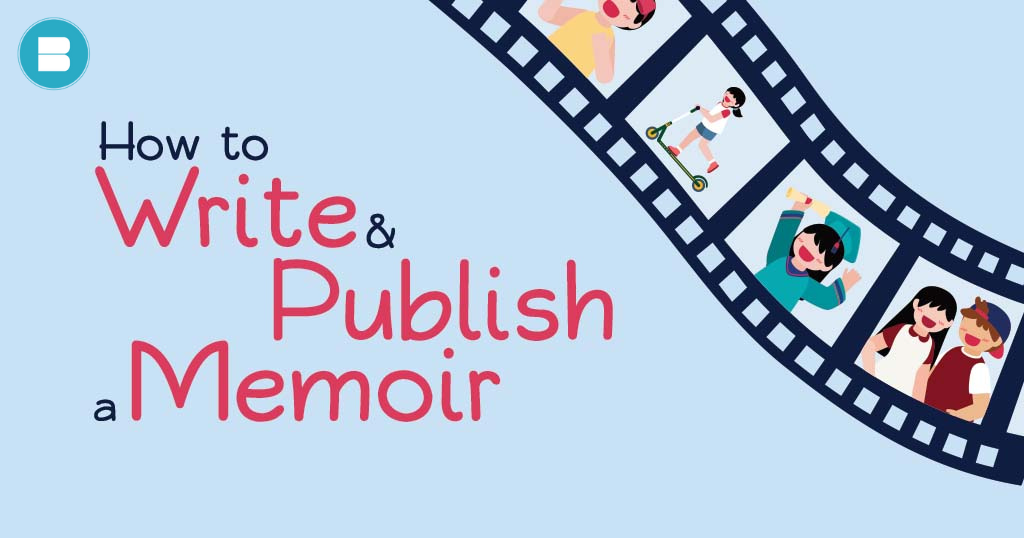
How to Write & Publish a Memoir in 2024?
Getting Started: Crafting Your Memoir Memoirs are strong literary works that allow people to share their own experiences, memories, and reflections with the rest of the world. Writing and publishing a memoir may be a rewarding venture, whether you’re an aspiring writer looking to capture your life’s journey or someone looking to leave a lasting legacy. Read: Alpha and Beta Readers: What are They and Why Bother. In this blog, we’ll look at how to write a fascinating memoir and how to navigate the world of memoir publication. Getting Started: Crafting Your Memoir Elements of a Compelling Memoir Writing Style and Techniques Navigating the Publishing Process Getting Started: Crafting Your Memoir Choosing Your Focus: A well-defined major subject or emphasis is the cornerstone of a fascinating memoir. This theme acts as the guiding thread that connects your story. Consider the crucial events, noteworthy experiences, or transforming lessons you want to share with your audience. This stage establishes the tone for your book, guiding the narrative and assisting you in crafting a story that connects with authenticity and purpose. Gathering Memories: Explore your past for raw materials for your book, such as memories, tales, and specifics. These fragments make up the mosaic of your life’s journey. Approach this approach with openness and curiosity, documenting not just the significant milestones but also the little events that have influenced you. Organise these pieces chronologically to guide your readers through your life’s history, or thematically to bring comparable events together for a more nuanced analysis. Creating Authenticity: The foundation of a successful memoir is honesty. Accept your flaws and communicate your feelings honestly, bringing readers into your inner world. Strive to portray your experiences, ideas, and feelings as they are, allowing your story to connect with real sincerity. This vulnerability not only strengthens your relationship with your readers, but it also adds depth and relatability to your narrative. By expressing your actual self, you urge readers to join you on a sincere journey of self-discovery and progress. Elements of a Compelling Memoir Captivating Opening: A great beginning is vital for capturing your readers’ interest. Begin your memoir with an enticing hook—a dramatic shift, a challenging topic, or a vivid description that establishes the tone. This first spark entices people to read on, eager to discover the trip you’re going to share. Character Development: Characters in your memoir should be vividly depicted. Investigate their personalities, goals, and roles within your story, whether it’s yourself or others. These rich character profiles give depth and authenticity to your tale, allowing readers to identify with the people who shaped your experiences. Emotional Resonance: Use the power of universal emotions to connect with your audience. Share your happy moments, struggles, victories, and insecurities. By expressing your emotions and experiences, you build an emotional connection that crosses personal borders, resonating with readers who have felt similarly in their own lives. Setting and Atmosphere: By clearly depicting the venues where crucial events happened, you may transport your readers to the heart of your tale. Invoke the senses and immerse readers in the scenario by painting a realistic picture of the surroundings. The environment you create adds depth and realism, which improves their grasp of the events and feelings you’re expressing. Theme and Reflection: Every memoir contains underlying themes or messages that allow for introspection and contemplation. Take time when you retell your experiences to dive into the deeper meanings and lessons they carry. Share your experiences with personal development and knowledge. By connecting your tale with bigger lessons, your memoir becomes a source of inspiration and connection for your readers, as well as a personal narrative. Writing Style and Techniques to Create a Memoir. Voice and Tone: The voice of your memoir is your individual literary fingerprint, representing your personality and point of view. It is the filter through which readers see your tale. Determine whether your tone of speech is reflective, funny, or emotional. Aligning the tone of your story with its mood improves reader connection. A thoughtful tone may be appropriate if your story is introspective. A funny tone may add appeal to a lighter memoir. A touching tone might be appropriate for a story about overcoming hardship. Experiment with numerous accents and tones to discover the one that best conveys the core of your tale. Dialogue: Dialogue brings your story to life by demonstrating real-world encounters. Use talks to highlight the complexities, connections, and conflicts of the characters. Dialogue provides realism by immersing readers at key times. Create discussions that are appropriate for the times and characters you’re portraying. This strategy not only increases reader interest, but it also adds a dynamic and relevant layer to your story. Show, Don’t Tell: Allow readers to experience your memoir’s emotions rather than merely hearing about them. Rather than stating, “I was nervous,” explain your quivering hands, rushing heart, and racing thoughts. This sensory immersion builds a visceral connection with readers, making your trip palpable. Incorporate rich pictures, textures, and fragrances into your writing. By using this strategy, you allow readers to walk in your footsteps, creating a more immersive and memorable reading experience. Pacing: The rhythm that takes readers through your story is known as pacing. Strive for balance by alternating between contemplative periods and exciting activities. Dwell on the pivotal events that created your story, digging into emotions and insights. Intersperse moments of activity and interaction to keep the energy going. Pacing is a tricky balance; if it is too sluggish, readers may lose interest, while if it is too quick, they may feel alienated. A well-paced memoir has a gratifying ebb and flow that keeps readers interested from beginning to end. Navigating the Publishing Process to Publish a Memoir. Publishing a memoir involves several steps, from writing and editing your manuscript to finding a publisher or self-publishing. Here’s a step-by-step guide on how to publish a memoir: Research Literary Agents and Publishers: Researching literary agents and publishers is a critical step in the journey to traditionally publish your memoir. Start by identifying professionals who…

